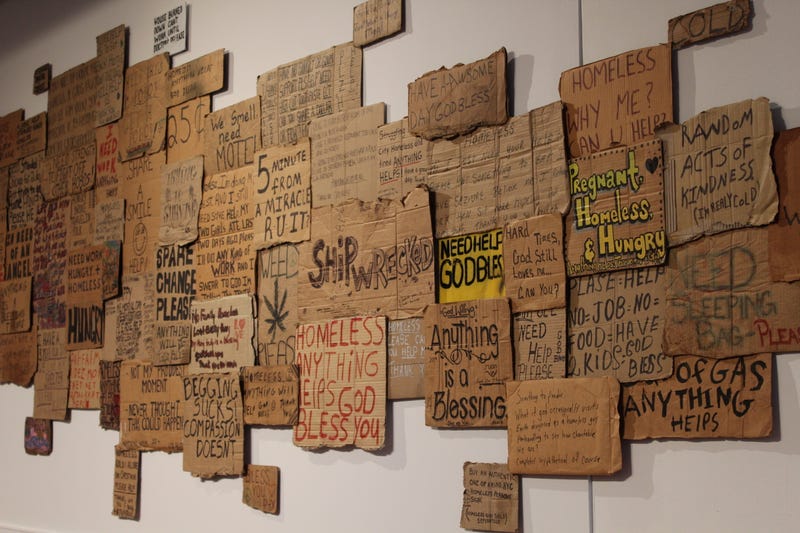
PHILADELPHIA (KYW Newsradio) — Some of Philadelphia’s leading medical researchers have united to support people experiencing homelessness in the area. Their initiative combines art and research in the hope of making a greater impact.
Data magnified by art is how Dr. Rosemary Frasso, professor of population health at Thomas Jefferson University and a College of Physicians of Philadelphia fellow, describes her two-part initiative addressing the growing issue of homelessness.
“Researchers can shed light on issues by quantifying and counting and documenting experiences, but artists bring things into the light,” she said.
To build on that discussion, Frasso collaborated on a new exhibit hosted by the Mütter Museum called “Unhoused: Personal Stories and Public Health,” which displays collages made from signs created by unhoused people from across the country. It runs at the museum through Aug. 5.
“This exhibit is a space where artists and researchers come together,” said Frasso. “There’s data here and art — all in a way that, if you take the time and immerse yourself, read what’s there, you’ll learn so much about experiences people are having.”
She will also moderate a panel discussion on March 20, featuring experts from Broad Street Ministry, the Children’s Hospital of Philadelphia’s Homeless Health Initiative, and Project HOME. The event is part of the College of Physicians’ Public Health Grand Rounds series, held in collaboration with the city’s Department of Public Health.
“We wanted people in the city to see the exhibit,” she said, “but also the Grand Rounds event brings people together who are doing the work in and with the people in this community.”
Artist Willie Baronet, who created the collages, hopes his work will inspire compassion. “On the street, it’s so easy to lean back or turn away. This gives people a chance to lean in and read the signs,” he said.
“I don’t believe anything changes until people care. This initiative is about getting people to feel something.”
